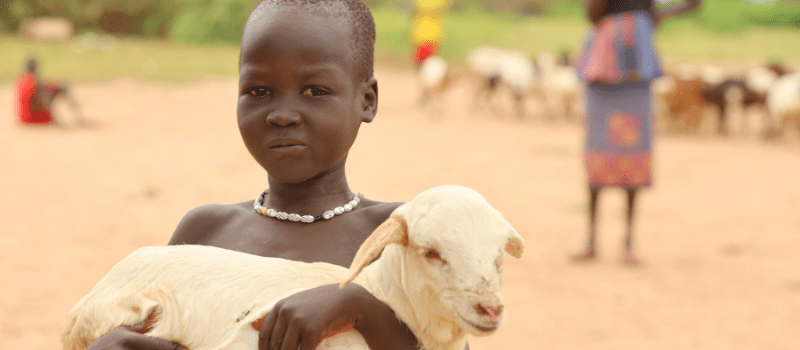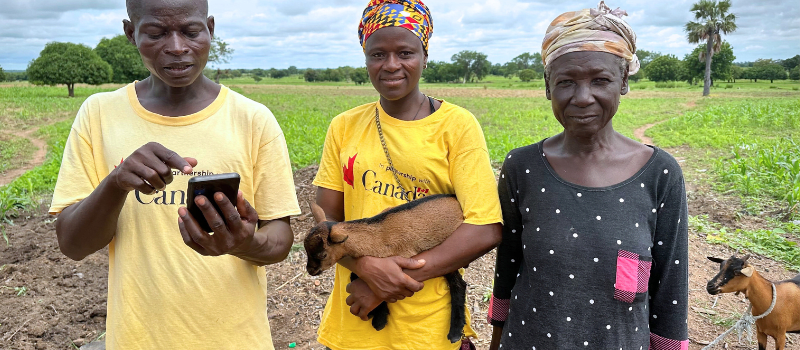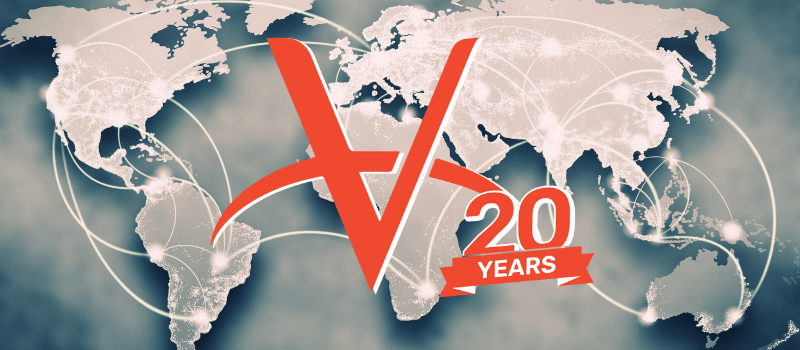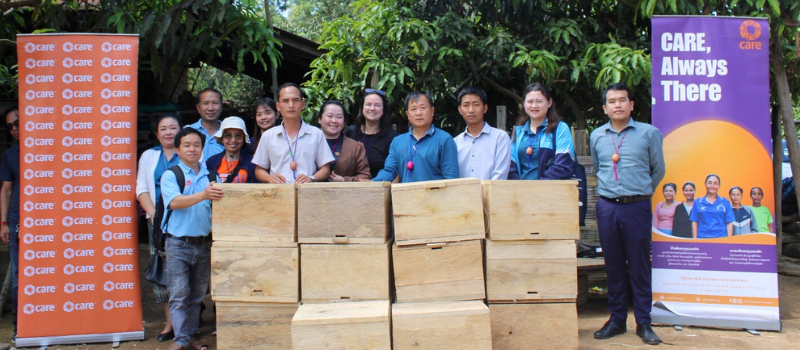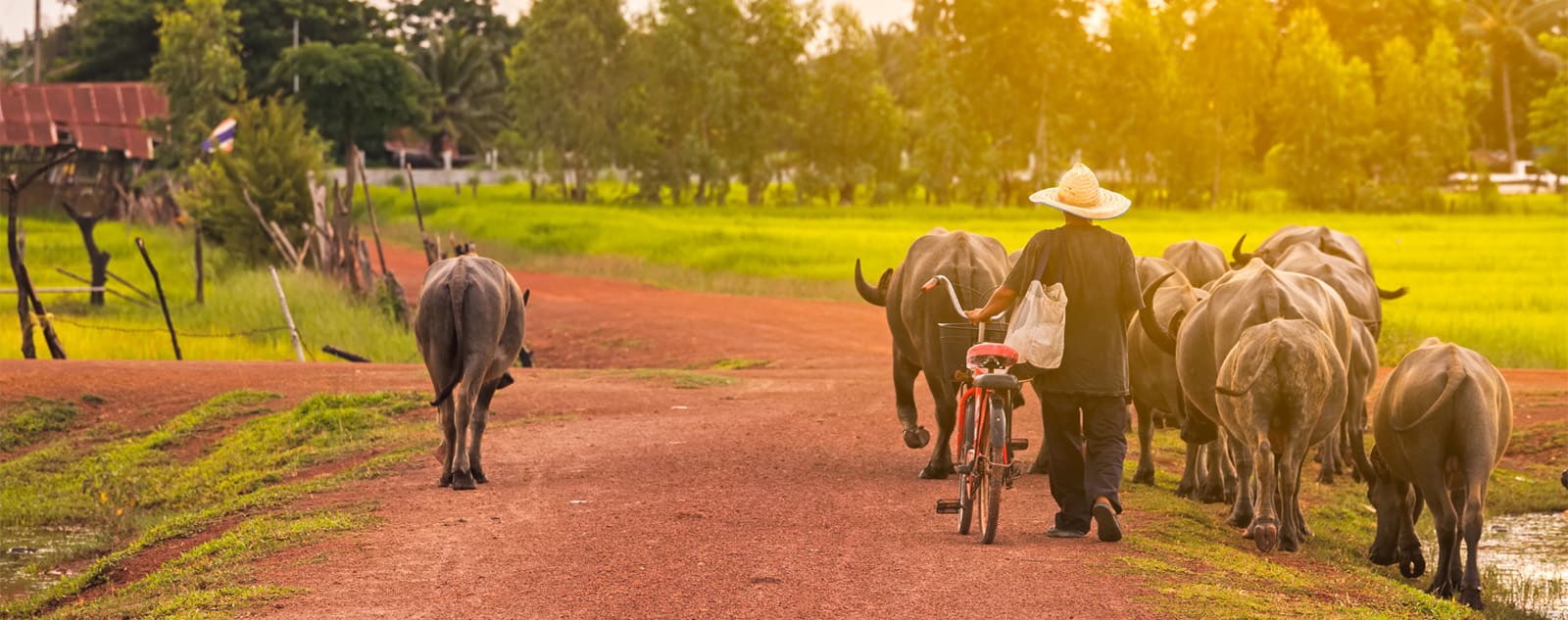In recognition of World Humanitarian Day, this blog explores why integrating One Health into humanitarian response is no longer optional—but essential. Drawing on VWB's programmatic experience and global evidence, it examines how siloed approaches fall short and why protecting animals, people, and the environment together is key to saving lives and livelihoods, while building real resilience. Written by Tanja Kisslinger, Director of Communications, VWB.
Introduction: A Crisis Response Model in Need of Reform
Disasters rarely affect people alone. Conflict, disease, and climate shocks disrupt entire human, animal, and environmental systems — each one deeply interconnected. Yet conventional humanitarian response remains focused almost exclusively on human needs, often treating animal health and ecosystem integrity as secondary or even irrelevant concerns.
This siloed model overlooks the complexity of crises and undermines recovery. When essential connections between people, animals, and the environment are ignored, the result is a critical blind spot — the missing link between life-saving aid and long-term resilience.
The One Health approach — grounded in the understanding that the health of people, animals, and ecosystems is inseparable — offers a better way forward. In an era of climate volatility, rising zoonotic disease risk, and protracted conflict, integrating One Health into humanitarian action is no longer a distant aspiration. It is a moral and operational imperative.
Figure: Why One Health Can’t Wait in Humanitarian Response
Fragmented Aid in a Connected World
The consequences of siloed response are stark. When floods displace entire communities, they also displace livestock, destroy grazing land, and contaminate water sources for both people and animals. In refugee camps, families may receive food aid and medical care — while their chickens, goats, or donkeys, essential to nutrition and income, receive no attention. When a zoonotic disease like Rift Valley Fever emerges, it may circulate in livestock long before humans show symptoms — yet veterinary surveillance is rarely integrated into emergency operations.
The impact of this fragmentation is felt across multiple dimensions:
- Zoonotic diseases go undetected until human cases emerge, delaying containment and increasing mortality.
- Livelihoods collapse when herds perish from starvation, illness, or neglect, pushing families deeper into poverty.
- Environmental damage accelerates when communities adopt unsustainable coping strategies, such as deforestation for fuel or unregulated waste disposal.
Humanitarian systems are effective at meeting urgent human needs, but they often defer animal health, livelihoods, and environmental stability to a later “development” phase. In reality, delaying these interventions can undermine the survival gains emergency aid achieves. For communities that rely on livestock and natural resources to rebuild, resilience must be supported from the outset — not as an afterthought.
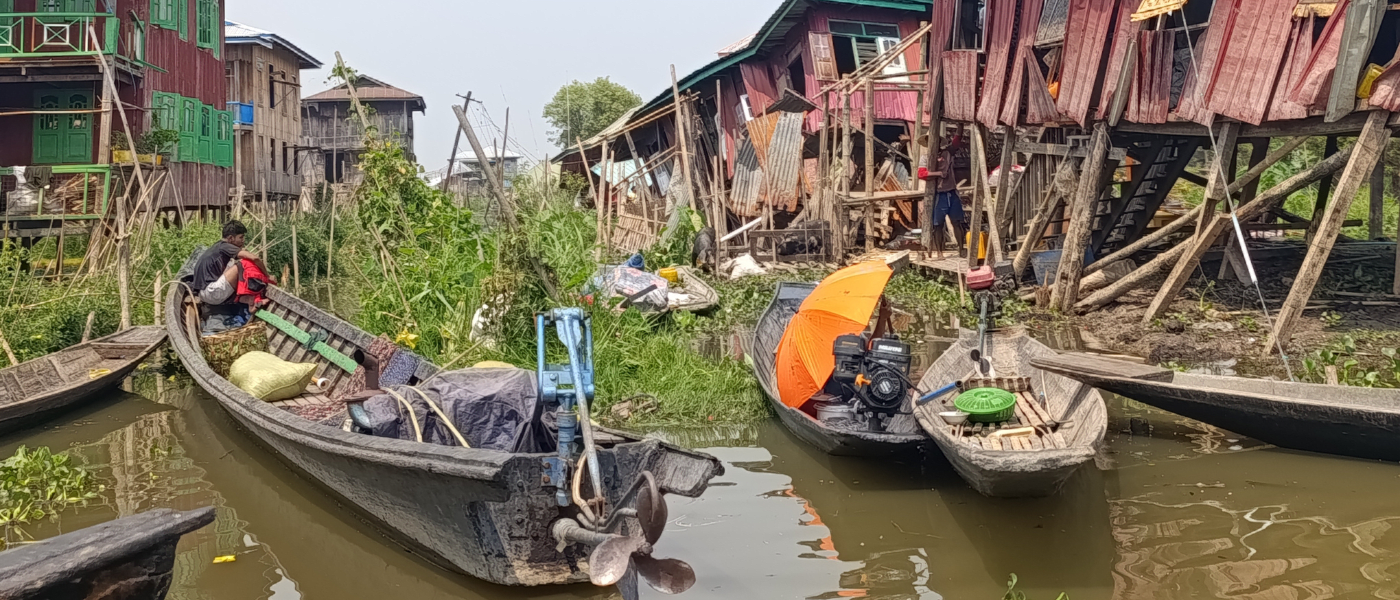 PHOTO: Immediately following Myanmar's March 2025 earthquake, damage to infrastructure, homes and livestock shelters in Aing Htaunt Gyi was widespread and devastating.
PHOTO: Immediately following Myanmar's March 2025 earthquake, damage to infrastructure, homes and livestock shelters in Aing Htaunt Gyi was widespread and devastating.
What Is One Health—And Why Now?
One Health is a collaborative, multisectoral approach that recognizes the interconnection between people, animals, plants, and the environments they share (WHO, FAO, WOAH, 2021). While it has gained prominence in global health discourse — particularly in the wake of COVID-19 — its application in humanitarian contexts remains limited.
In places where people depend heavily on animals for food, income, and mobility — and where fragile ecosystems are already under strain — applying a One Health lens changes the kinds of questions we ask:
- What early warnings are livestock disease patterns providing?
- How is deforestation affecting waterborne disease outbreaks?
- Can animal vaccination campaigns be paired with human health outreach?
Rather than treating each sector as isolated, One Health enables a more complete and effective response — one that addresses immediate needs while safeguarding the systems that sustain life.
Lessons from the Field: One Health in Action
⬛ Myanmar: Coordinating Human, Animal, and Environmental Needs After Disaster
When a 7.7-magnitude earthquake struck central Myanmar in March 2025, over 1.2 million people were displaced — many from livestock-dependent regions. Traditional aid models might have provided food and shelter for people while leaving animal health for later, but VWB and partners acted on all fronts at once. Emergency cash transfers prevented desperate livestock sales; targeted veterinary outreach and supply restocking kept herds alive; WASH infrastructure reduced waterborne disease risk. Companion animals, often neglected in disaster response, received vaccinations and urgent care. This integrated response protected nutrition, safeguarded incomes, and prevented secondary public health crises.
 PHOTO: Within 48 hours of the earthquake, VWB's dedicated partners in Mandalay were delivering food, veterinary care, and emergency support to animals in crisis.
PHOTO: Within 48 hours of the earthquake, VWB's dedicated partners in Mandalay were delivering food, veterinary care, and emergency support to animals in crisis.
⬛ South Sudan: Building Local One Health Systems in Crisis-Prone Regions
In South Sudan’s Eastern Equatoria State, where pastoralist livelihoods are threatened by livestock disease, zoonotic outbreaks, and climate shocks, VWB’s approach is not simply to deliver vaccines, but to embed capacity: community-based disease surveillance, trained and equipped Community Animal Health Workers, and gender-responsive food safety training. Since launch, tens of thousands of animals have been vaccinated and treated, thousands of households have gained access to veterinary services, and women leaders have received targeted training to reduce zoonotic disease risks. By linking animal health, human health, and environmental hygiene from the outset, these measures are strengthening community resilience in one of the world’s most fragile contexts.
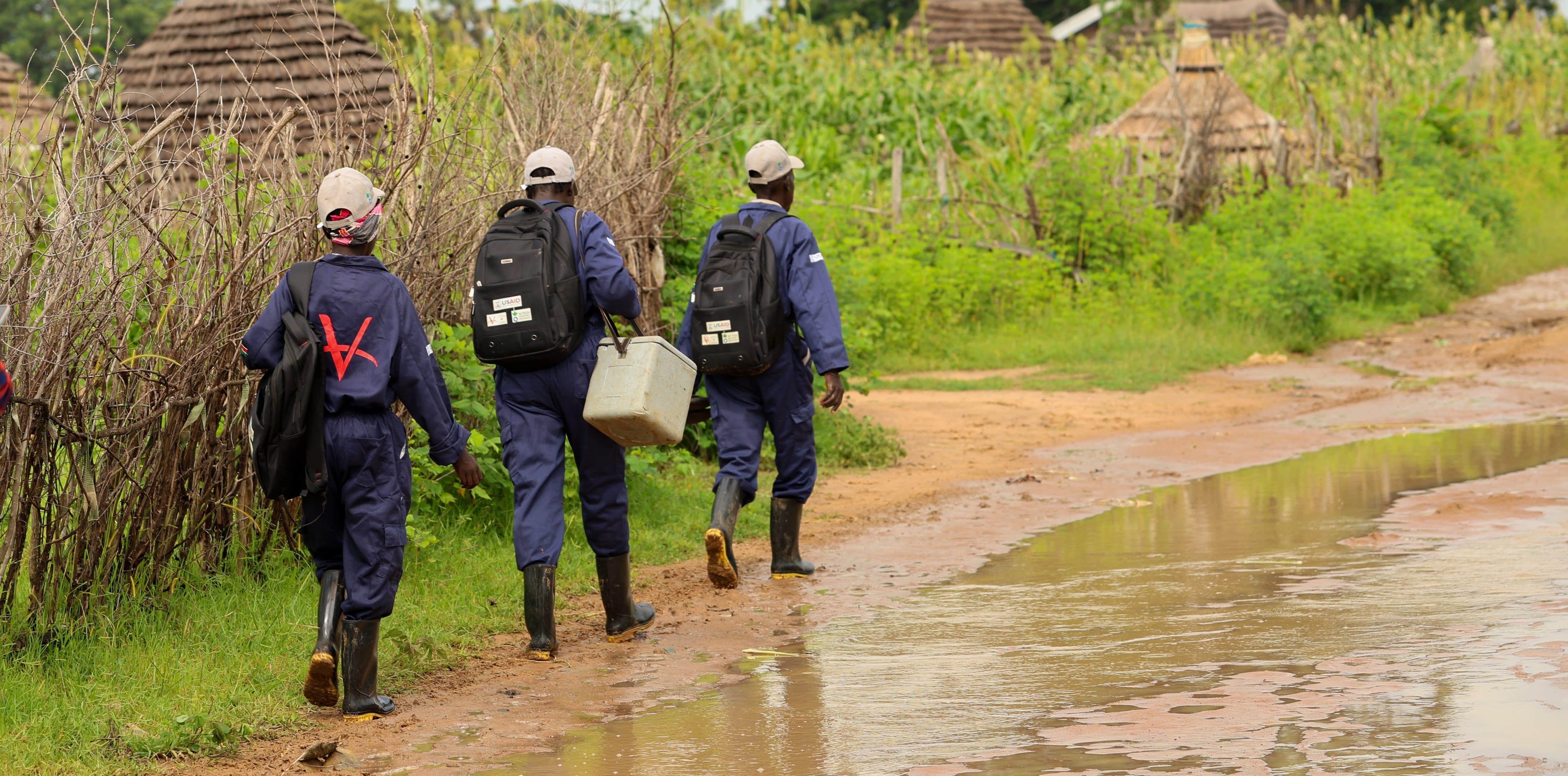 PHOTO: Three VWB-trained Community Animal Health Workers (CAHWs) make their way to a remote community in Aweil East, South Sudan.
PHOTO: Three VWB-trained Community Animal Health Workers (CAHWs) make their way to a remote community in Aweil East, South Sudan.
⬛ Ukraine: Combining Emergency Rescue with Sustainable Livelihoods
In Ukraine, war has created overlapping emergencies: animals trapped on frontlines, breakdown of vaccination systems, and the collapse of rural incomes. Partnering with local organizations, VWB combines immediate rescue and veterinary care with market-driven livelihood programs. In the east, rescued animals are brought to safety, reducing zoonotic risks in devastated communities. In central Ukraine, goat-farming and cheesemaking training empower families to grow herds and market dairy products using EU-compliant standards. In the north, poultry initiatives supply households with birds, feed, and business skills — increasing incomes and improving access to protein. Together, these interventions demonstrate how humanitarian, development, and public health goals can be met simultaneously when One Health principles guide the response.
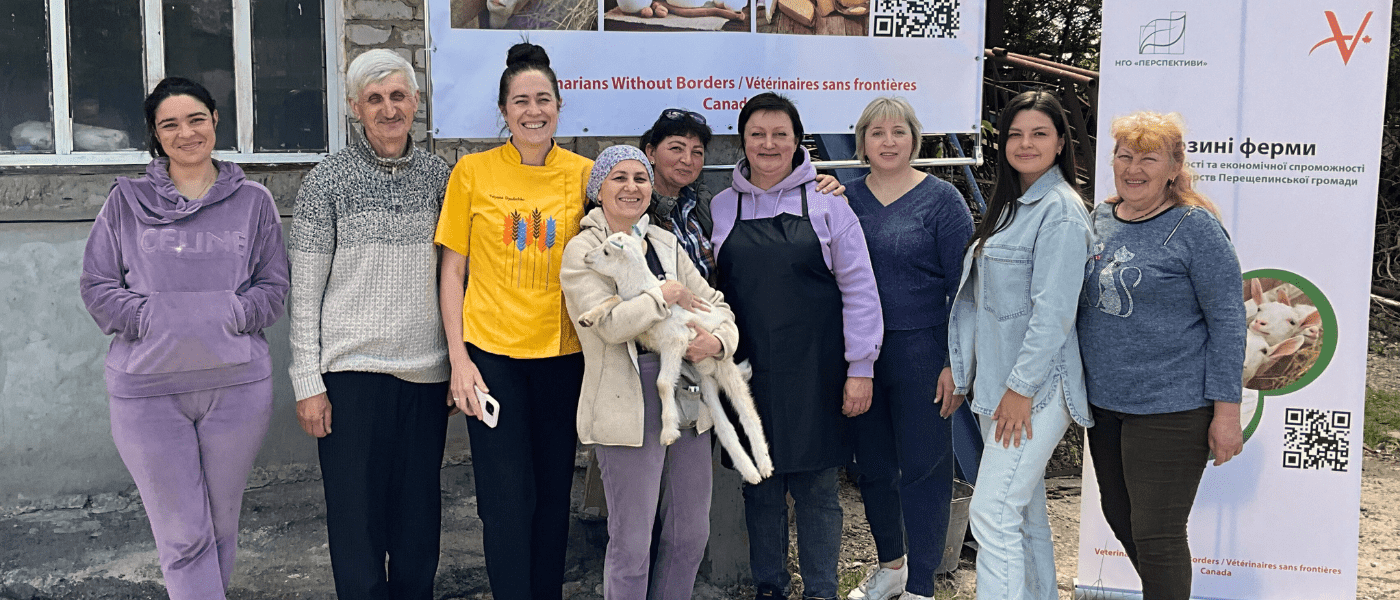 PHOTO: Community members and project staff gather in Perechepyne, where VWB partnered to deliver a locally led goat farming and dairy initiative.
PHOTO: Community members and project staff gather in Perechepyne, where VWB partnered to deliver a locally led goat farming and dairy initiative.
Five Reasons Why One Health Belongs in Humanitarian Response
- Zoonotic Disease Prevention: Over 75% of emerging infectious diseases in humans originate in animals (CDC, 2017). Humanitarian crises create ideal spillover conditions: close human–animal contact, poor sanitation, and weakened health systems. Integrated surveillance and animal health measures are essential to prevent outbreaks.
- Livelihood Preservation: Livestock are often a family’s most valuable asset. Emergency veterinary care, feed, and shelter help prevent economic collapse — reducing long-term aid dependency (FAO, 2018).
- Food and Nutrition Security: Healthy animals provide vital nutrients — milk, eggs, meat — during displacement or market disruption, strengthening community nutrition profiles.
 Resilience to Climate Shocks: Droughts, floods, and other climate extremes threaten health and livelihoods. Disease monitoring, water management, and climate-smart agriculture protect both.
Resilience to Climate Shocks: Droughts, floods, and other climate extremes threaten health and livelihoods. Disease monitoring, water management, and climate-smart agriculture protect both.- Smarter, More Efficient Aid: Integrated programs reduce duplication, stretch scarce resources, and address root causes. Pandemic preparedness through One Health can yield up to tenfold returns on investment (World Bank, 2022).
Shifting Systems: What Needs to Change
Embedding One Health in humanitarian response will require systemic adjustments:
- Policy Reform: Humanitarian guidelines should mandate cross-sectoral planning with clear indicators for animal and ecosystem health.
- Flexible Funding: Donors should fund and support integrated programming and dismantle artificial barriers between sectors.
- Capacity Building: Frontline responders need training in One Health principles, basic animal care, and zoonotic risk mitigation.
- Community-Led Design: Local knowledge — from CAHWs, women leaders, and farmer networks — should shape every stage of response.
- Cross-Sector Coordination: Health, agriculture, and environment actors must share data, conduct joint assessments, and respond collaboratively.
Conclusion: A New Standard for Humanitarianism
True humanitarian response must do more than ensure survival — it must protect the systems that enable communities to recover, rebuild, and thrive. This includes the livestock that provide food and income, and the ecosystems that safeguard water, grazing land, and disease regulation.
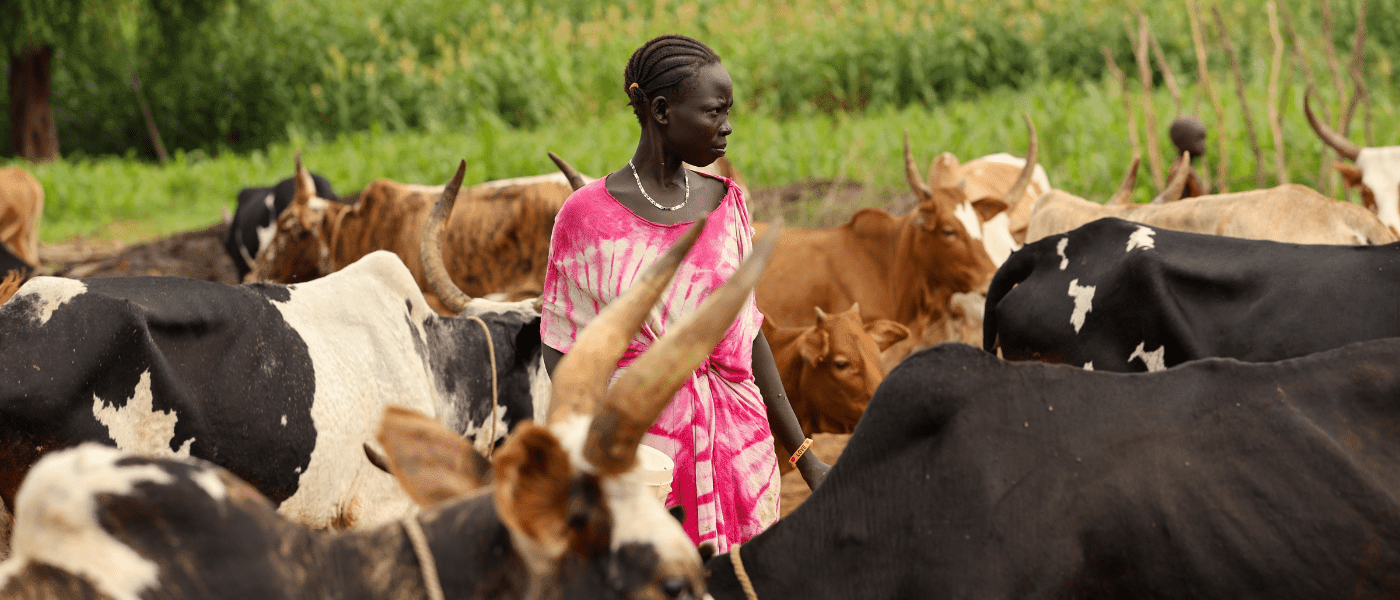
PHOTO: A mother and small-scale farmer in Aweil East, South Sudan, takes part in a mass livestock vaccination campaign by VWB, helping protect livelihoods and strengthen resilience.
For Veterinarians Without Borders, One Health is not a distant aspiration — it is an urgent necessity. As emergencies become more frequent and complex, integrating animal, human, and environmental health into humanitarian action from the outset strengthens resilience, protects livelihoods, and reduces the risk of future disasters.
The cost of delay — in lives lost, livelihoods collapsed, and ecosystems degraded — is simply too high.
References:
- CDC. (2017). One Health. Centers for Disease Control and Prevention.
- FAO. (2018). Protecting livelihoods in emergencies. Food and Agriculture Organization of the United Nations.
- OCHA. (2021). Global Humanitarian Overview 2022. United Nations Office for the Coordination of Humanitarian Affairs.
- WHO. (2016). Ebola: The One Health approach to preventing future outbreaks. World Health Organization.
- WHO, FAO, WOAH. (2021). One Health Joint Plan of Action (2022–2026).
- World Bank. (2022). Investing in One Health for all.
- Wobbles, G., Bardosh, K., & Zinsstag, J. (2023). One Health and Humanitarian Action: Intersections, Challenges, and Opportunities. Frontiers in Public Health, 11, 1123456.
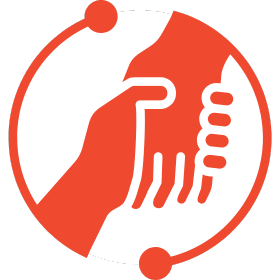 Join us in recognizing that animals are essential to recovery and resilience in every community. Healthy animals strengthen food security, protect livelihoods, and support the health of people and ecosystems. Donate, volunteer, or subscribe to help bring a One Health lens to global humanitarian action.
Join us in recognizing that animals are essential to recovery and resilience in every community. Healthy animals strengthen food security, protect livelihoods, and support the health of people and ecosystems. Donate, volunteer, or subscribe to help bring a One Health lens to global humanitarian action.

